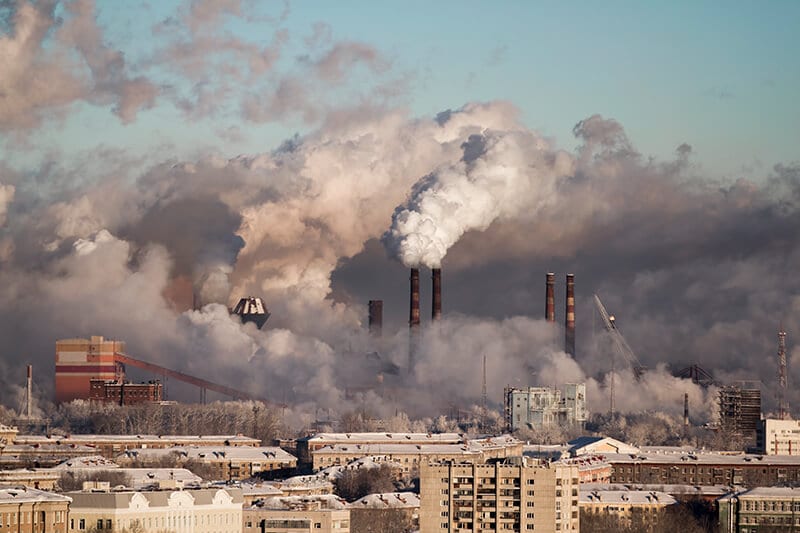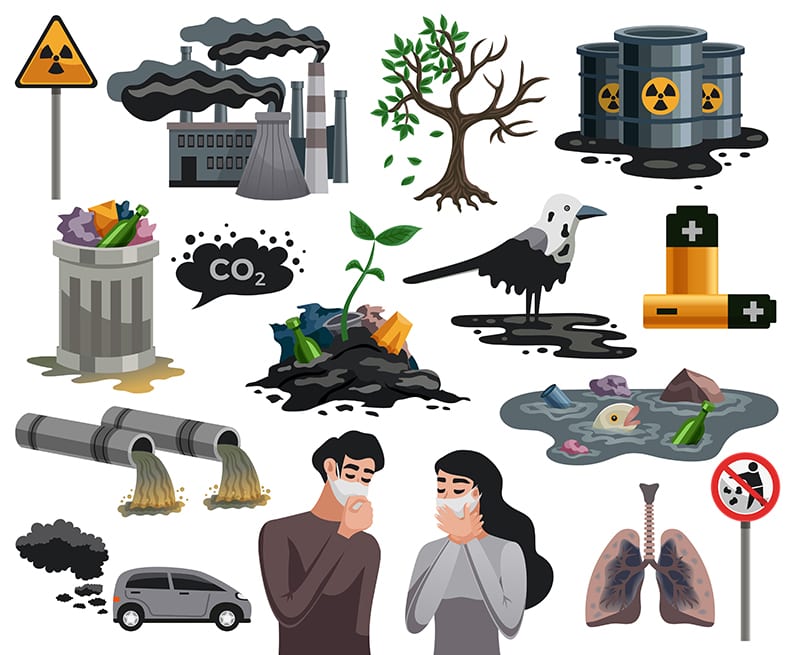Air Pollutants and their Health Effects
Air Pollution is one of the biggest issues facing our world right now. The health effects of air pollution are damaging for years and decades. Respiratory, cardiovascular, and heart diseases are just some of the effects caused by air pollution. There is a very strong link between air pollution and lung cancer as well. Globally, outdoor air pollution causes 25 per cent of all adult deaths from heart disease, 24 per cent from stroke, 43 per cent from pulmonary disease, and 29 per cent from lung cancer. Indoor or home air pollution also causes similar diseases. It is also among one of the top five causes for premature death across the world. Household and outdoor or ambient pollution kills 7 million people annually.
Air pollution is caused by different causes, one among them being, air pollutants. Air pollutants are natural and airborne substances that are introduced in the environment in a particular concentration or amount. This amount is sufficient enough to have a significant effect on humans, animals, plants, building materials, and vegetation. There are primary pollutants such as Carbon Monoxide and secondary pollutants such as ozone. Majorly known and recognized air pollutants are Carbon Monoxide, Nitrogen Dioxide, Lead, Ground-Level Ozone, Sulfur Dioxide, and Particle Pollution. Air Pollutants are classified as ‘Criteria air pollutants’ or ‘Hazardous air pollutants.’ Criteria Pollutants are used to determine whether a region or area is meeting air quality standards. Hazardous air pollutants are also known as ‘air toxics’ and are chemical compounds that can cause cancer and other chronic diseases. Air pollutant hazards can include fire hazards, corrosivity, chemical reactivity, and sensitivity.

Air pollutants have a direct impact on plants, forests, aquatic life and ecosystem, soil, and vegetation. Air pollutants can get in the human body through inhalation, dermal contact, and ingestion. Once in your body, they can accumulate in tissues, hair, skin, bone, fat or leave your body through exhalation, urine, sweat, and feces. Various countries regulate the amount of air pollutants outdoors and indoors through specific laws and regulations.
Fine particles such as dust, aerosols, aerosols from fuel emissions, or soot can reach your lungs and enter the bloodstream. It can cause inflammation and affect other parts of your body, especially the heart and the brain. Long-term and short-term exposure to air pollutants can cause other diseases such as diabetes, premature birth, low birth weight, and dementia. Ground-level ozone which is a secondary air pollutant is formed after the reaction of two elements. It can lead to tightness in your chest, breathlessness, and worsen your asthma should you suffer from it. Nitrogen Dioxide and Sulphur Dioxide have similar effects on our bodies.
Air pollutants are responsible for acute and chronic respiratory diseases. Acute disease may include everything from mild irritations, inflammation, to allergic reaction, impaired lung function, to complete respiratory failure. Chronic diseases include pulmonary diseases, lung cancer, and cardiovascular diseases. Particle Pollution has been associated with cancer. Asbestos and other fibers have long-term effects such as asbetosis, mesothelioma, and lung cancer. Dust from coal has been linked to pneumoconiosis (black lung disease). Textile fiber exposures cause byssinosis (brown lung disease).

Air pollutants affect every body but they can have a damaging effect on children and the elderly. The disadvantaged and impoverished groups of society are also at higher risk of disease due to their living conditions. Infants are vulnerable since their lungs are developing and increased susceptibility to infection. Continuous exposure to Ozone for even a short duration can lead children to develop breathing problems later. People working in factories, engaging in heavy work or exercise are at a higher risk. Tobacco smoke has been one of the key air pollutants in many countries. It has caused chronic pulmonary disorders in European countries. Indoor air quality plays a very strong role in development and progression of chronic pulmonary disorders. Attention needs to be paid to maintaining the air quality indoors and outdoors.
Many of the world’s poor live in despicable conditions, without proper ventilation or sanitation. Living near public transport, airports, industrial areas, polluted rivers increases their susceptibility to disease. The lower middle class of societies also work in factories, warehouses, or closed spaces without any effective ventilation. Lack of access to proper medical care or quality support leads to poor information and improper hygiene. About 90% of deaths caused by ambient or outdoor air pollution occur in low and middle income countries and groups.
Air Pollutants are not safe by any standard. The governments need to ensure stricter standards and protocols for use and distribution. Improving air quality, ventilation, and sanitation efforts can mitigate the damage caused by air pollutants. Monitoring air quality, pollution, and companies can create a reduction in air pollution. Simple steps such as no residences near industrial areas or factories can allow people the distance to stay safe and healthy.
